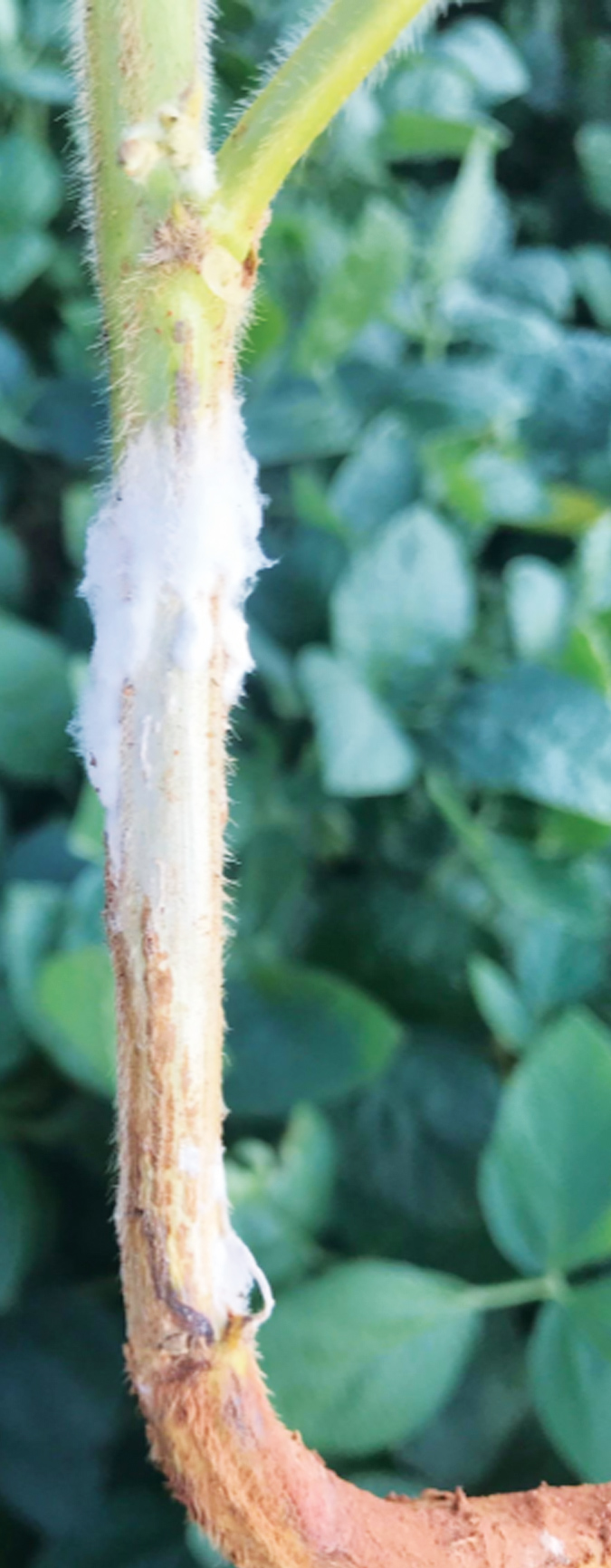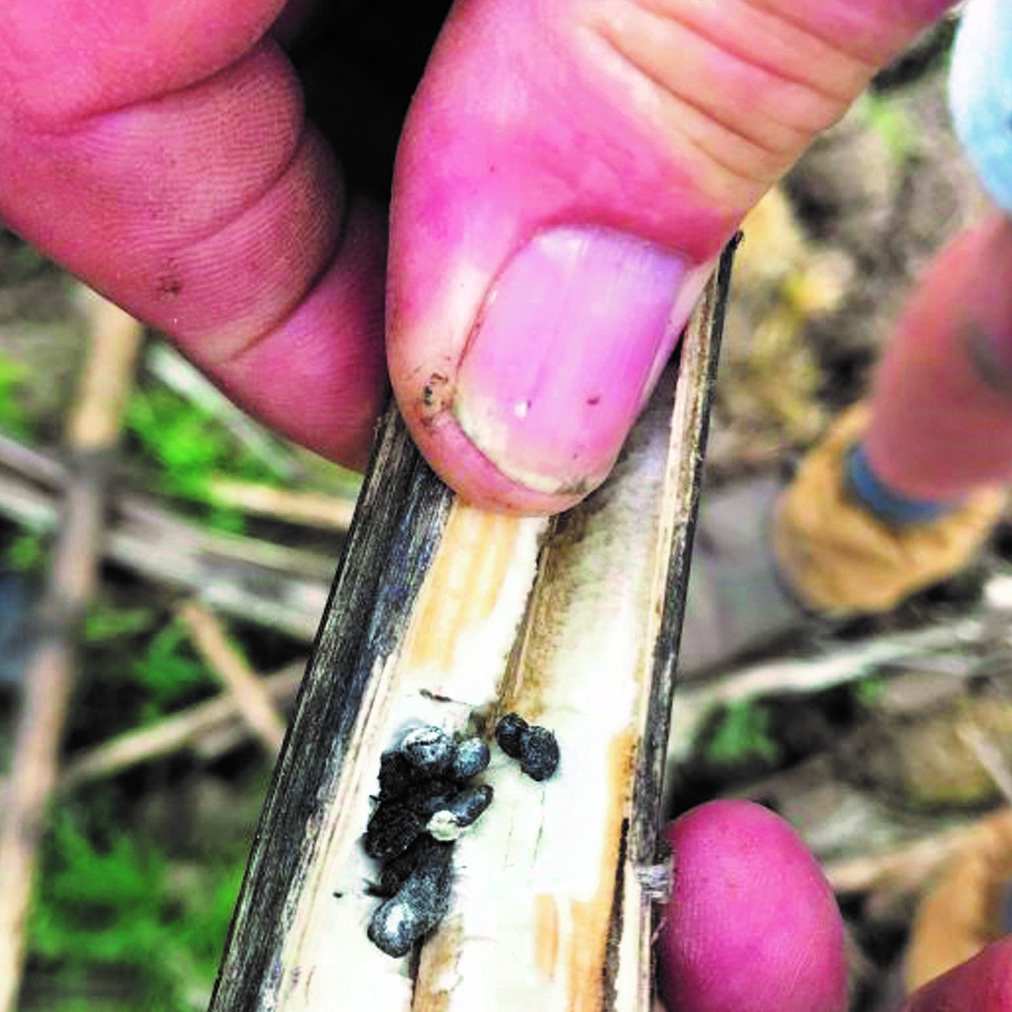October 2022
| PIETMAN BOTHA, INDEPENDENT AGRICULTURAL CONSULTANT, AND CORNÉ VAN DER WESTHUIZEN, AGRONOMIST AT PANNAR SEED |  |
The new production season is at hand and farmers must choose which crops to produce, when to plant and how to produce the crops. It is important to understand the risks of every crop.
In the 2021/2022 production season, sclerotinia created a huge problem for sunflower and soybean farmers. In North West some sunflower fields had up to 80% infection, which had a major impact on the sunflower income.
One risk that influences all crops is the weather. It is important to understand the rainfall probabilities and the general distribution of rainfall over the season. In the western production regions, the probabilities of a midsummer drought are high and farmers must take note of it. It is important to schedule your crops and planting dates around these expected midsummer droughts.
To manage the potential risk of a disease, the disease triangle must be understood and managed. If a host plant that is susceptible to a relevant disease, the disease-causing pathogen and the specific environmental requirements for infection by the pathogen are present at the same time and at the right stage, it can lead to the outbreak of a disease.
In sunflower and soybeans, the development of diseases associated with S. sclerotiorum is highly dependent on a conducive environment – cool, wet conditions and denser canopies (planting density and row spacing), where air circulation is limited. This creates a favourable microclimate for disease development. Soybeans and sunflower are especially susceptible to Sclerotinia during flowering. Therefore, if apothecia is present one to two weeks before flowering, it is likely that spores will be present during this stage of the plant’s lifecycle.
SCLEROTINIA
Sclerotinia may occur in the 2022/2023 production season. What can a farmer do to prevent it? Unfortunately, there is not a simple solution yet. When Sclerotinia attacks a plant, it is very difficult to spray the crop – so a farmer must try to prevent Sclerotinia in the crops.
The prevention of Sclerotinia is a difficult task and all aspects of grain production must be incorporated to prevent the disease. This will start with the choice of cultivars, planting date, fertilisation of the crop and regular scouting for apothecia in the crop.
Cultivar selection is used to manage a given plant period’s flowering date more effectively. By using a planting package of two or more hybrids for a given planting period, the flowering date can be optimally managed. Where Sclerotinia is present, not all the sunflowers will be flowering at the same time. This should prevent Sclerotinia from infecting all the plants.
In such a package, make use of growth class and flowering period differences between hybrids by using medium and medium-late hybrids that will flower at different times. Also use single-cross and three-way hybrids in the package to optimally manage the percentage of the planting that is in flower on a given day. This will lower the risk of Sclerotinia.
The second thing that farmers must do is the selection of fertilisers. Make sure that the crop is fertilised so that it can withstand stress. It is important not only to apply nitrogen (N), phosphorus (P) and potassium (K), but also calcium (Ca), sulphur (S) and copper (Cu). These micro-elements will help the plant in a stress period, whether it is drought or too much rain.
Farmers must rotate their crops. Where sunflower with a high percentage of Sclerotinia occurred, sunflower must not be planted on that field again for at least three years. The soil cultivation will also help to prevent Sclerotinia. The ploughing of the field will help to prevent Sclerotinia, but if there was Sclerotinia the chances of getting Sclerotinia is very high. Covering crops can help to lower the Sclerotinia risk.
Weeds will always be a problem. Therefore, the optimal control of weeds is very important. Some weeds such as cosmos and other broadleaf weeds are known to be hosts for Sclerotinia. The weeds put the sunflower under stress, which will lead to Sclerotinia infecting the plant.
Make sure that you do everything possible to manage the stress levels of the crop.
To manage Sclerotinia effectively, the early detection of apothecia is important to help farmers taking steps before symptoms are observed. Initial symptoms include water-soaked lesions (Photo 1). These lesions develop into white cotton-like mycelium on sunflower heads (Photo 2) and soybean pods, as well as in and on the stems (Photo 3) of both sunflower and soybean. Ultimately, as the disease progresses, the white mycelium develops into melanised hardened sclerotia (Photo 4). This hardened sclerotia provide a manner for the pathogen to survive between seasons and under non-conducive conditions.

Water-soaked lesions on sunflower.

Cotton-like mycelium on sunflower heads.

Sclerotinia stem rot.
Photo: Dr Lisa Rothmann

Melanised hardened sclerotia.
Once apothecia is observed, be aware that disease development is likely during favourable environmental conditions. Observing apothecia is often critical to the decision to implement disease management. For help to identify apothecia, mail a photo to Dr Miekie Human, research and policy officer at Grain SA, at miekie@grainsa.co.za.
There are a limited number of registered fungicides for soybean and sunflower in South Africa. These include azoxystrobin, benomyl, cyprodinil, epoxiconazole, fludioxonil, procymidone and pyraclostrobin. Benomyl is currently registered as a seed treatment for sunflower, whereas procymidone is the only active ingredient registered for Sclerotinia stem-rot control on soybeans. A registered label for soybean rust, with the active ingredients pyraclostrobin and epoxiconazole, suggests that the fungicide may reduce Sclerotinia stem rot (AVCASA, 2019).
The decision to spray or not is dependent on weighing the risk present, which starts with being alert to the presence of apothecia. Don’t assume that Sclerotinia is easy to manage. The best advice is to prevent it and to apply good farming practices.
Publication: October 2022
Section: Pula/Imvula